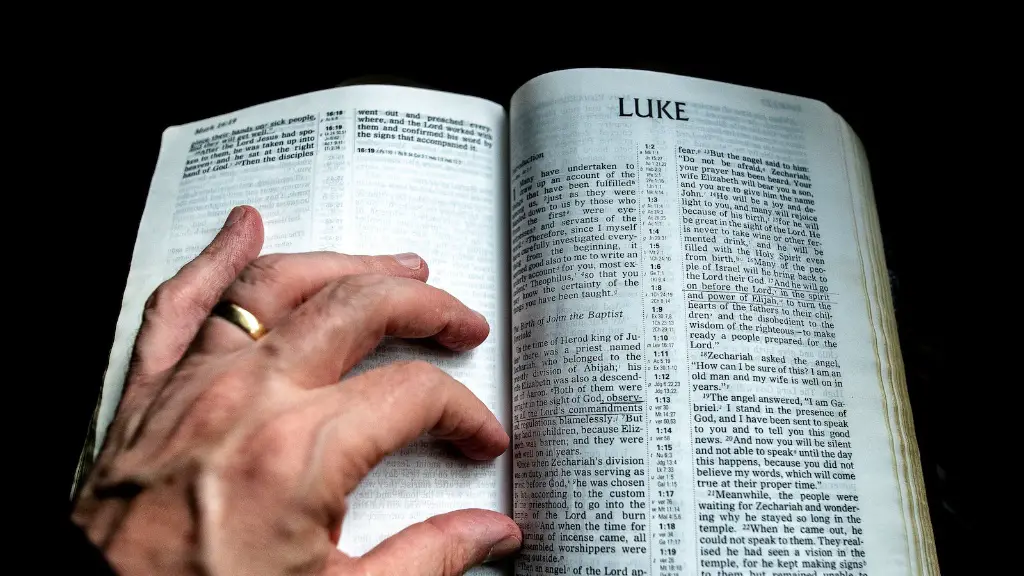Background Information
Citing the Bible is an important part of any academic paper. It allows readers to know where information was obtained and allows them to conduct additional research related to the topic. In general, most citation styles require that information be cited in the following manner: Author’s Last Name, First Name (Editor’s Names, if applicable). Title of Book or Volume (if applicable). Version Used (if applicable). Edition (if applicable). Location information: Publisher, Publication Date, Page Numbers.
The American Psychological Association (APA) style requires a different approach when citing the Bible. The APA requires that the reference list include the source information for Bible passages instead of in-text citations. The reference list must include the author, date of publication and the volume or edition of the Bible.
How To Cite The Bible In-Text
When citing a specific passage from the Bible, you must include both the book name and the chapter and verse information. Depending on the style you are using, the in-text citation may vary.
The Modern Language Association (MLA) style of in-text citation requires you to include the book and chapter before the verse. For example: John 3:16.
The American Psychological Association (APA) requires you to include the abbreviated book name and chapter. For example: (John 3.16).
The Chicago Manual of Style for in-text citations require you to use the book name and chapter number followed by the verse number: John 3:16.
The Harvard style of in-text citations requires you to include the book name, followed by the chapter and then the verse. For example: John 3:16.
Citing The Bible According To Specific Citation Styles
The Modern Language Association (MLA) style is the most widely used style. To cite the Bible according to this style, you must include information on the Author (if applicable), Title of the Book, Version Used (if applicable), Edition (if applicable), and Publication Information. For example:
King James Version. Bible. Cambridge: Cambridge UP, 2019.
American Psychological Association (APA) style requires you to start with the author’s last name and first name initial, the date of publication, the source title, and the volume or edition. For example:
King James Version, 2019, Bible, v. 1.
The Chicago Manual of Style requires you to include the author’s name (if applicable), the date of publication, the source title, and the volume or edition. For example:
King James Version. Bible. 2019. 1st ed.
The Harvard style requires you to include the author’s name (if applicable), the date of publication, the source title, and the volume or edition. For example:
King, J. (2019). Bible. Cambridge: Cambridge UP.
Accessing Citable Versions Of The Bible
To make citing easier, many websites and resources provide citable versions of the Bible. For example, The Bible Gateway site allows you to search for a passage, select the version you want, and then generate a citable version. You can also access TheNET Bible to search for passages, select the version you want, and generate a citable version.
Alternative Citation Methods
If you can’t find a citable version of the Bible or a passage online, you can still cite it by providing the reader with a link to the passage or book. For example, if you’re citing John 3:16 from the King James Version, you can provide the reader with a link to the passage.
Understanding the Different Versions of the Bible
When citing the Bible, it’s important to understand the different versions of the Bible. It’s also important to make sure that the version you’re citing is the version you want to cite. The King James Version is the oldest and most widely used version, while other versions such as the New International Version and the English Standard Version are also widely used.
Other Citing Methods
Other citing methods include citing the Bible according to the Turabian style, which is a more simplified version of the Chicago Manual of Style. The Turabian style requires the same information as the Chicago Manual of Style but includes additional information such as edition and volume numbers.
You can also cite a book of the Bible without specifying a volume or edition. To do this, you must include the book name, chapter, and verse, followed by a period. For example: John 3:16.
Considering Copyright Issues
When citing the Bible, it’s important to consider copyright issues. If the Bible is not in the public domain, the work should not be cited without permission from the copyright holder. Additionally, understanding copyright rules can help you avoid accusations of plagiarism.
Knowing Where to Get Help
It can be difficult to know how to cite the Bible correctly. Luckily, there are a number of resources available to help you understand how to cite the Bible correctly. For example, most citation styles have official guidelines and manuals available, as well as online resources such as websites and blogs that can provide additional guidance. Additionally, many universities and other institutions have writing centers that can provide help with citing the Bible.


